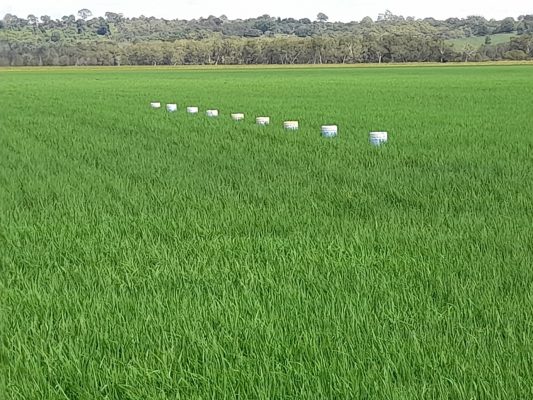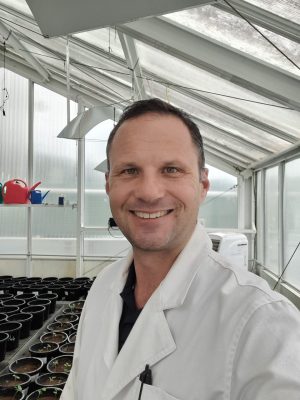Rice cultivation is the second largest source of agricultural greenhouse gas emissions each year. That’s because in traditional flooded growing systems, conditions are ideal for methane and nitrous oxide production.
But researchers from Southern Cross University are investigating whether dryland rice operations, like those in Northern NSW, generate less emissions.
Working with industry partner Natural Rice Co, researchers Dr Michael Reading and Professor Terry Rose set up trial sites at Woodburn, Buckendoon, Tuckurimba and Kilgin (lowland sites), and Lismore (SCU site).
Static chambers were used to measure soil methane and nitrous oxide emissions. Sampling took place at least once per week, with increased sampling after fertilisation or rain.


Methane emissions results
Dr Reading said the soil conditions from the dryland rice cultivation sampled in their study resulted in essentially zero methane emissions over the season.
“Results showed that methane emissions remained slightly negative or very low throughout the entire rice growing season at each of the sites, and did not appear to respond to soil moisture or fertiliser applications,” he said.
“We saw a period of positive methane emissions throughout March at one site.
“Overall, with the exception of a few small positive methane fluxes in the lowland sites, methane uptake was almost always observed through the season.”
Why were methane emissions low?
Dr Reading said the aerobic subsoil conditions meant there was plenty of oxygen just below the surface. And it’s likely the soil contained methanotrophs, which are microbes that consume methane.


Nitrous oxide emissions
Large variations in nitrous oxide emissions were observed throughout the season. Nitrous oxide seemed to respond to high soil moisture, and also responded to fertiliser applications.
“Fertiliser applications across the sites produced between 33 to 41% of nitrous oxide emissions at the lowland sites, while the fertiliser application at the SCU site accounted for 78% of emissions,” Dr Reading said.
This was because nitrogen fertilisers (urea) were used, and also due to residual inorganic nitrogen in the soil.
How do these results compare to rice in other areas?
Rice grown in the Northern Rivers appears to have very low or negligible methane emissions in dry seasons compared to paddy rice grown in Australia and elsewhere in the world. Nitrous oxide emissions were also low compared to other rice cultivation systems.
Carbon dioxide equivalent emissions from dryland rice grown in Northern NSW were about 2.5 times lower than reported Australian flooded rice emissions on a per hectare basis.
Implications for the Northern NSW rice industry
A marketing claim of “low methane rice” would be supported by the data, but Dr Reading said a further season of monitoring would make the claim more robust.
Going forward, Natural Rice Co also plans to support research to investigate ways that growers can reduce nitrous oxide emissions.
The company is focused on building a sustainable and environmentally-friendly local industry, by conserving water and reducing irrigation.
Download the research poster >>> Low methane rice poster_Dr Michael Reading